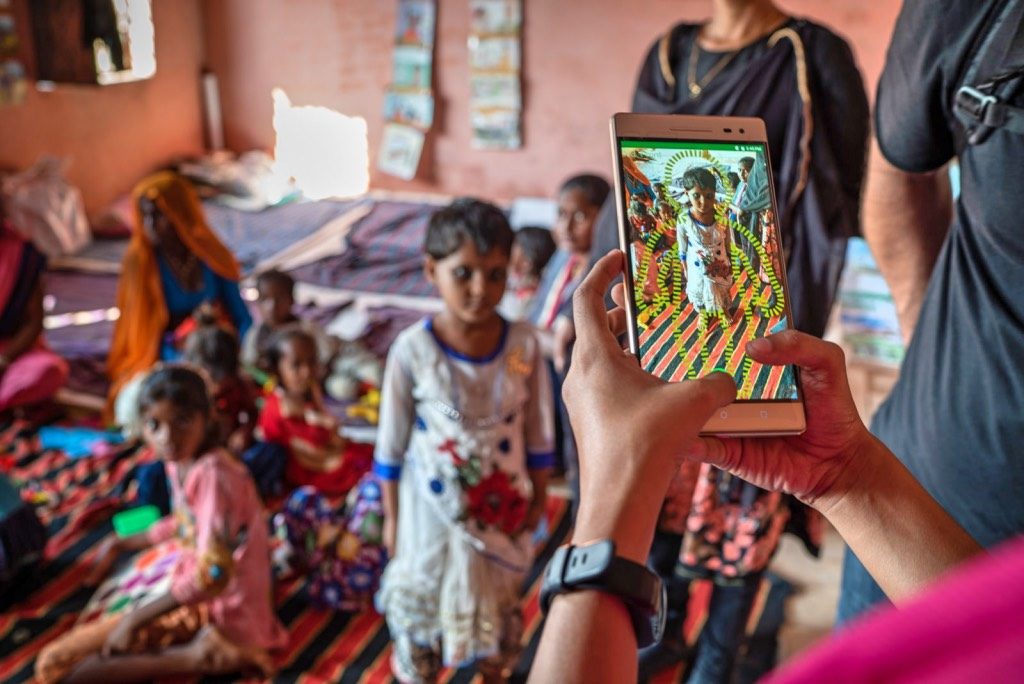India grapples with a severe problem of malnutrition in children. Of the 3 million child deaths due to malnutrition globally, half that number is attributed to India. A report titled, ‘Food for thought: tackling child malnutrition to unlock potential and boost prosperity’ — estimates that the economic cost of micro-nutrient malnutrition costs India between 0.8 per cent and 2.5 per cent of its GDP, which is the equivalent to $15–46 billion. One of the Sustainable Development Goals (SDG) of the United Nations Development Programme is to end all forms of hunger and malnutrition by 2030.
Children are the country’s future and India has a youthful population. So it is pertinent that malnutrition in children is curbed. The key challenge is the timely identification of malnourishment in children.
Malnourishment affects the physical and mental development of a child. A malnourished child is 20 per cent less productive as compared to a normal child.
Image Credit: Microsoft India
Welthungerhilfe, one of the largest private aid organizations in Germany, launched a project in India to help address malnutrition in children. It partnered with Action Against Hunger, a humanitarian organisation in India, to detect malnourishment in Indian children under the age of five years.
Frontline workers of the Indian government use manual methods and traditional equipment like weighing scales and measure tape, for height and weight measurements. They use this data for a standard abbreviation to concluded if a child is malnourished or not. Since this is a technical process, the workers who have basic education often struggle with the calculations, and it leads to inaccurate inferences in many cases. So a malnourished child is often declared normal and vice-versa – thereby slowing down the process of early detection.
The Solution: An AI powered smartphone app
Welhungerhilfe devised a smartphone app to improve the accuracy of measurements and detection. It developed a Child Growth Monitor solution. It is an intelligent application that can detect malnutrition and enable health workers identify and provide care to children struggling from chronic undernourishment. The smartphone application is cloud-based and is powered by Microsoft Azure and AI services. It takes 3D scans of a child and sends these to the cloud for processing.
Jochen Moninger, Innovation Director, Welthungerhilfe said, “Today, more than 800 million people around the world suffer from hunger. You can’t solve hunger if you don’t know where the hungry people are. Welthungerhilfe envisions the Child Growth Monitor app will emerge as a recognised, global solution among humanitarian organisations. In India alone, that could free up hundreds of millions of dollars for reinvestment into the lives of children.”
Using an infrared sensor available in smartphones, the Child Growth Monitor App directly captures 3D measurements of a child’s height, body volume and weight ratio, and loads the data onto Azure Cloud. The scans are then evaluated by nutritionists and IT specialists using Azure AI solutions, analysing the child’s dietary health. This data can further be used by field workers to work out nutrition plans and provide children with vitamin-rich provisions based on their requirements. The Child Growth Monitor App has a learning algorithm, which gets smarter with each measurement.
Video credit: Microsoft India
India is the first country to pilot this project. Welthungerhilfe’s India based partner Action Against Hunger is scanning 10,000 children under the age of five years across Maharashtra, Madhya Pradesh and Rajasthan by March 2019. Twelve teams of 150 trained health workers have been provided app-enabled smartphones to collect data of children.
“In India, front-line health workers are responsible for tracking 40 to 60 kids within their intervention areas, but they don’t have the training or resources to accurately measure the children to assess their overall nutrition. What’s more, those same workers struggle to maintain the equipment needed to capture heights and weights. Having Child Growth Monitor on board will hugely impact the early identification of children suffering from malnutrition, thereby reducing the treatment time,” said Dr. Shivangi Kaushik, Program Manager for Action Against Hunger, a humanitarian organisation in India.
The front-line team on the ground gives regular feedback to Welthungerhilfe for the improvement of the app. The aim is to make it more accurate and more user-friendly for the government front-line workers, who usually have very basic education.
Header image credit: Microsoft India
#AIforAll

